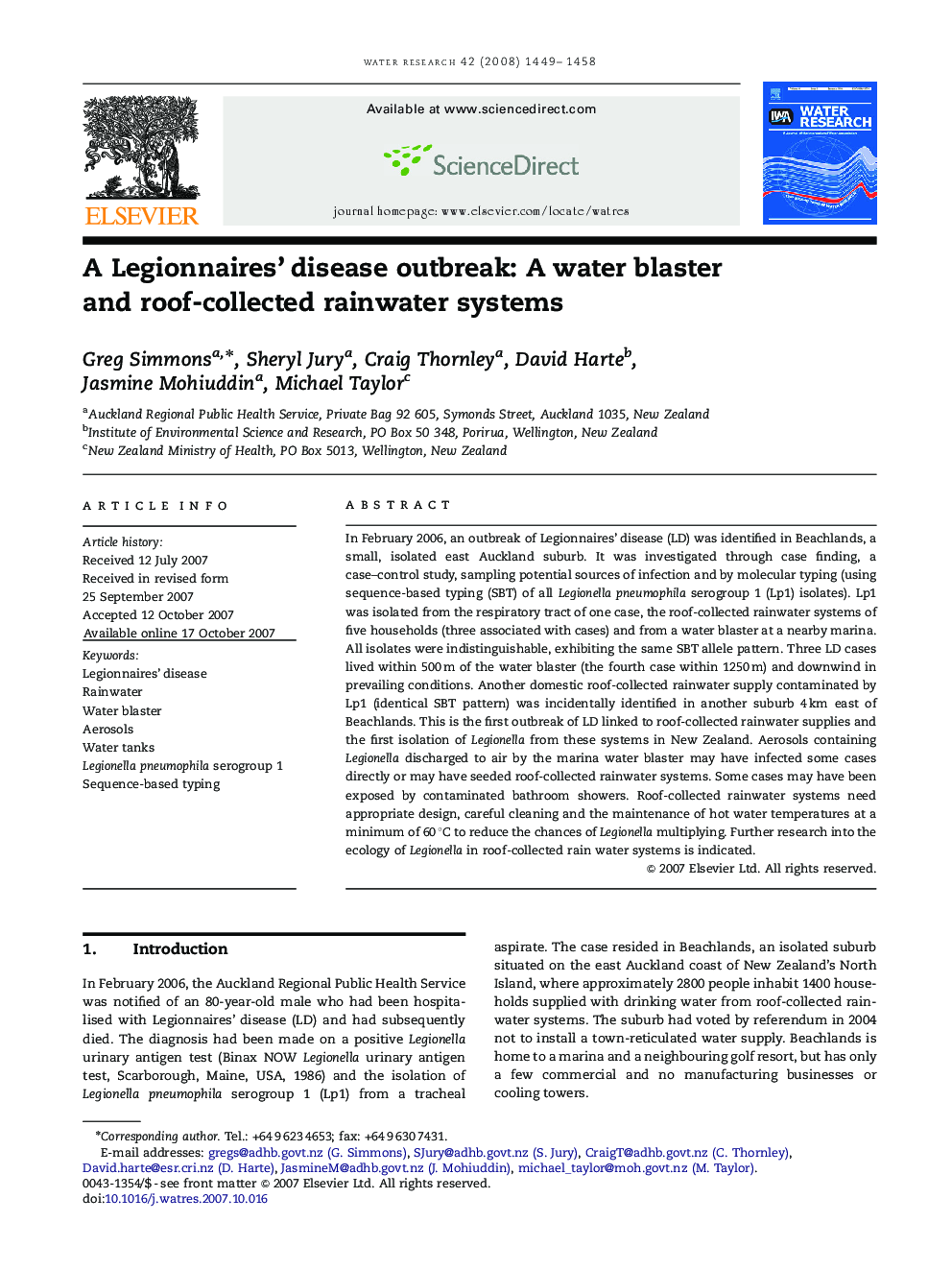| Article ID | Journal | Published Year | Pages | File Type |
|---|---|---|---|---|
| 4485032 | Water Research | 2008 | 10 Pages |
In February 2006, an outbreak of Legionnaires’ disease (LD) was identified in Beachlands, a small, isolated east Auckland suburb. It was investigated through case finding, a case–control study, sampling potential sources of infection and by molecular typing (using sequence-based typing (SBT) of all Legionella pneumophila serogroup 1 (Lp1) isolates). Lp1 was isolated from the respiratory tract of one case, the roof-collected rainwater systems of five households (three associated with cases) and from a water blaster at a nearby marina. All isolates were indistinguishable, exhibiting the same SBT allele pattern. Three LD cases lived within 500 m of the water blaster (the fourth case within 1250 m) and downwind in prevailing conditions. Another domestic roof-collected rainwater supply contaminated by Lp1 (identical SBT pattern) was incidentally identified in another suburb 4 km east of Beachlands. This is the first outbreak of LD linked to roof-collected rainwater supplies and the first isolation of Legionella from these systems in New Zealand. Aerosols containing Legionella discharged to air by the marina water blaster may have infected some cases directly or may have seeded roof-collected rainwater systems. Some cases may have been exposed by contaminated bathroom showers. Roof-collected rainwater systems need appropriate design, careful cleaning and the maintenance of hot water temperatures at a minimum of 60 °C to reduce the chances of Legionella multiplying. Further research into the ecology of Legionella in roof-collected rain water systems is indicated.
